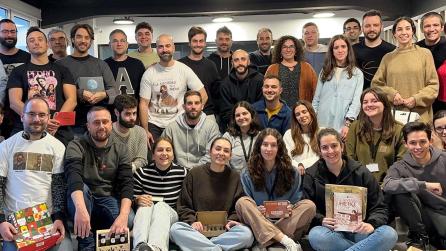Adapting a novel into a film is never an easy task.
But when you take a well-known piece of science fiction complete with fictional planets, vast landscapes, and sandworms, it’s a different thing altogether. This is what DNEG had to take on when creating the VFX for the latest adaptation of Frank Herbert's iconic novel, Dune.
With a large fanbase behind it and high expectations all around, the pressure was on the DNEG creative team to capture the photorealistic visual style of the film. Spearheaded by director Denis Villenueve, Overall VFX Supervisor Paul Lambert, and DNEG VFX Supervisors Tristan Myles and Brian Connor, it was an ambitious project but using Foundry’s compositing toolset and the artistic minds of the DNEG team, they were able to create Oscar-worthy visual effects.
We caught up with Francesco Dell’Anna, Compositing Supervisor, and Stephen James, DFX Supervisor at DNEG to discuss how they tackled the project, the mix of practical and digital effects, the use of sandscreens, and how they managed high expectations to create an epic, sci-fi classic.
Building fictional planets
As the visual style was established so early on, Francesco, Stephen, and the DNEG team were able to experiment with new ideas, drawing from the rules and visuals that were already established. This also helped with the mix of practical and digital effects that were used on the project.
“More often than not, most projects set out different rules for what is practical and what is visual effects and this can lead to the audience being taken out of the film when it comes to the effects,” explains Stephen. “But Denis and Paul wanted everything very grounded and designed most shots this way so that when we do have spectacular, larger-than-life moments, you totally believe in them.
“In most cases, there was a practical foundation for the visual effects work. For example, if we had to do an Ornithopter landing, they would shoot a helicopter in its place and you’d get all of the wonderful dust/sand blowing in plate, and you could also study how the dust occluded and scattered the light around the vehicle. This can make the integration of CG elements more challenging, but there is a certain freedom in just needing to match into a practical reference. You get all of the little imperfections that make something believable."
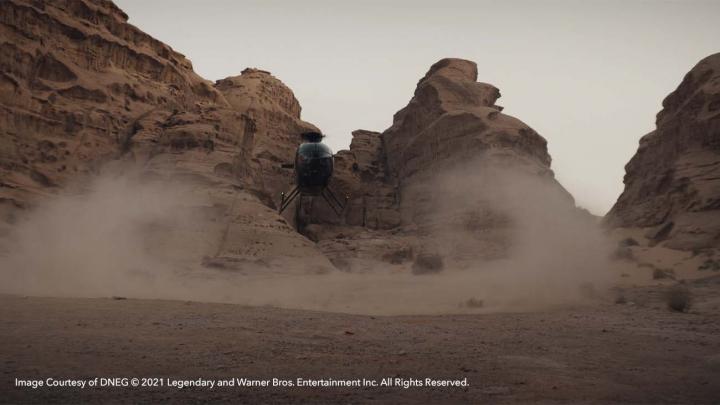
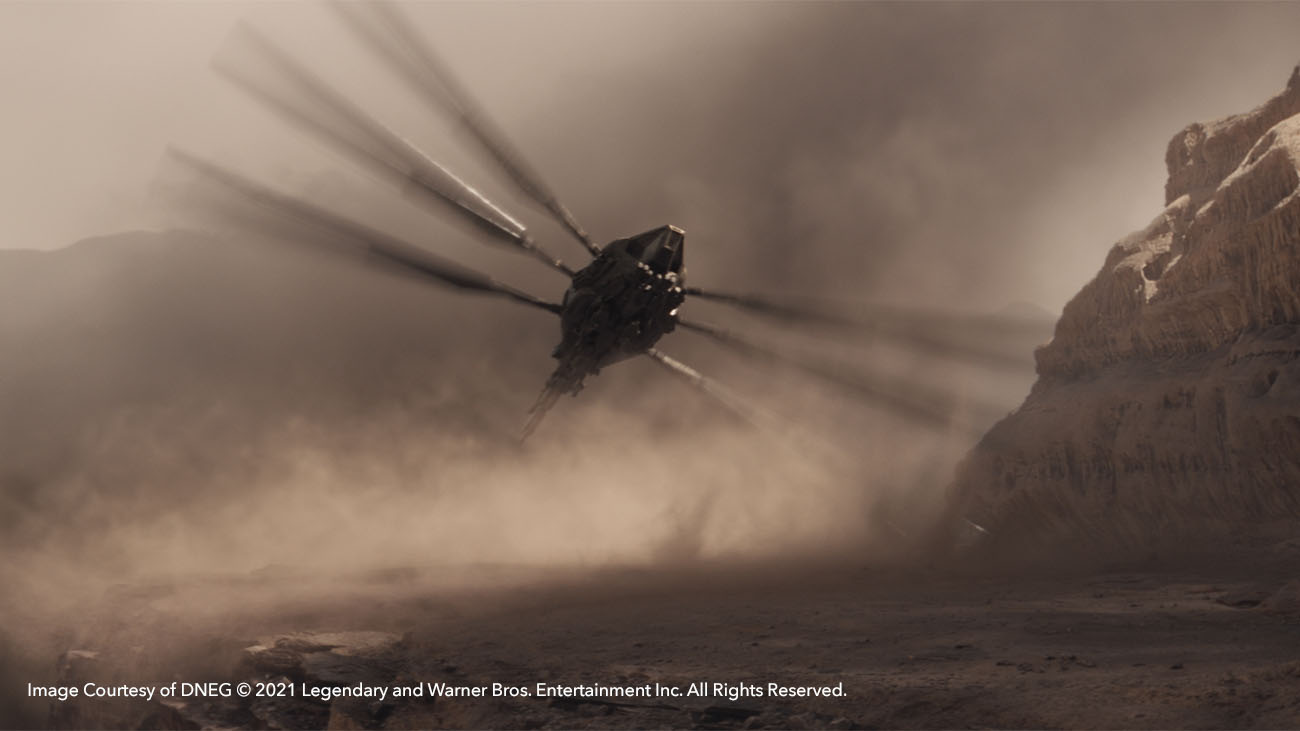
Francesco adds: “One of the sequences I was assigned to was the Attack on the spaceport. The practical effects on set consisted of big gasoline flames and functioned as a placeholder for what would eventually be FX explosions, and were incredibly helpful. Not only did they give us a clear understanding of how bright the fires would have been in such a dark environment, but it also gave us clues on how they would glow at night and provided reflections and light wrap on the environment and on the characters. This is something that would have been quite challenging to achieve so naturally only through the use of lighting and compositing.”
Blue, green, or sandscreens
To further ensure the photorealism of Dune, the team used sandscreens — a screen that is, you guessed it, the color of sand. These worked better than traditional blue or green screens which can sometimes create unnatural images if filmmakers don’t account for the light and how it impacts the foreground.

The use of the sandscreens gave the VFX team a good starting point when dealing with the edges and provided natural reflections and colors on the characters and the environment. It also helped with the different tones, luminance, and the spill of colors.
“We established a workflow in using the sandscreen to our advantage,” says Francesco. “Roto and keys were used to stencil the FG from the plate. We then filled the stenciled area with the same color of the sandscreen in order to obtain a sort of a clean screen, then we would divide the clean screen with the original plate.
“The result would have been then multiplied with the background in order to basically transfer the original image into the bg. An extraction done with roto and key that would have not included fine details since they had already been multiplied into the bg, would just go on top of everything.”
Stephen adds: “What I really love about the sandscreen. Is that it gives total control of the light back to the cinematographer, and still gives us the flexibility to change the content. It allows the compositor to focus on the background and integration as they know the foreground is exactly as it should be. Every approach should be considered when planning out shots, but the sandscreens worked really well for the wide-open, natural lighting of Dune.”
The key to complexity
Both Francesco and Stephen were well acquainted with Nuke before starting Dune and, as the only compositing tool used on the film, it was used extensively on a daily basis, proving to be a fundamental part of DNEG’s pipeline.
“There are proprietary tools that DNEG has built on Nuke that facilitate our daily work,” says Francesco. “We usually build templates that automatically import the elements needed to assemble the shot and that provide a basic script for the compositors to start to work on. We also automate some of the repetitive work such as denoising plates, creating ipgs, creating premult layers from roto, etc. Nuke is heavily involved in all this automation.”
On Dune one of the main challenges the team faced was the huge amount of deep data they had to tackle with the compositing. Almost every shot had a deep pass and the team relied heavily on Nuke to handle the large files and on large amounts of the pre-comp. With such a large project, every sequence in the film presented its own set of challenges.

“The shield effect [...] was probably one of the most complex effects I had to deal with,” says Francesco. “The setup was built entirely in Nuke throughout the use of roto and timewarp techniques. Simply put, we picked a few frames in either backward or forwards and ran those through time distortion. We then applied a few transformations and grading treatments to achieve the final look.
“What made it even more challenging was the fact that we could not reveal the effect procedurally because it wasn’t looking quite right, it was eventually revealed frame by frame through hand paint in order to give a sense of natural dissipation from the strike point. I’ve helped at the early stages of the LookDev of the effect, eventually, the entire sequence and final look were handled by the other compositing supervisor. I then needed to translate similar logic in the Attack to the spaceport, where the shield effect on the vehicles was instead achieved through the use of 3D FX passes.”
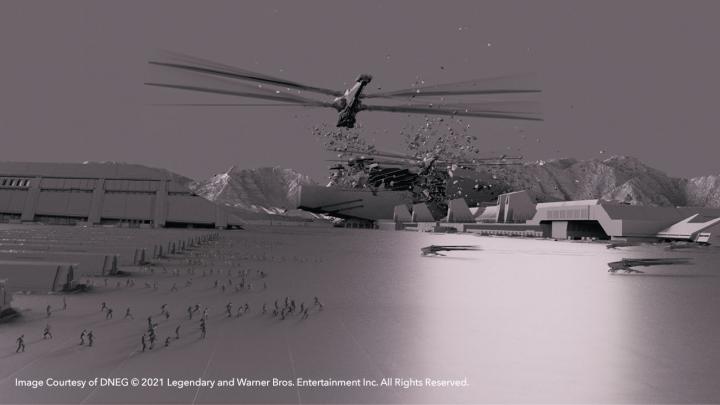
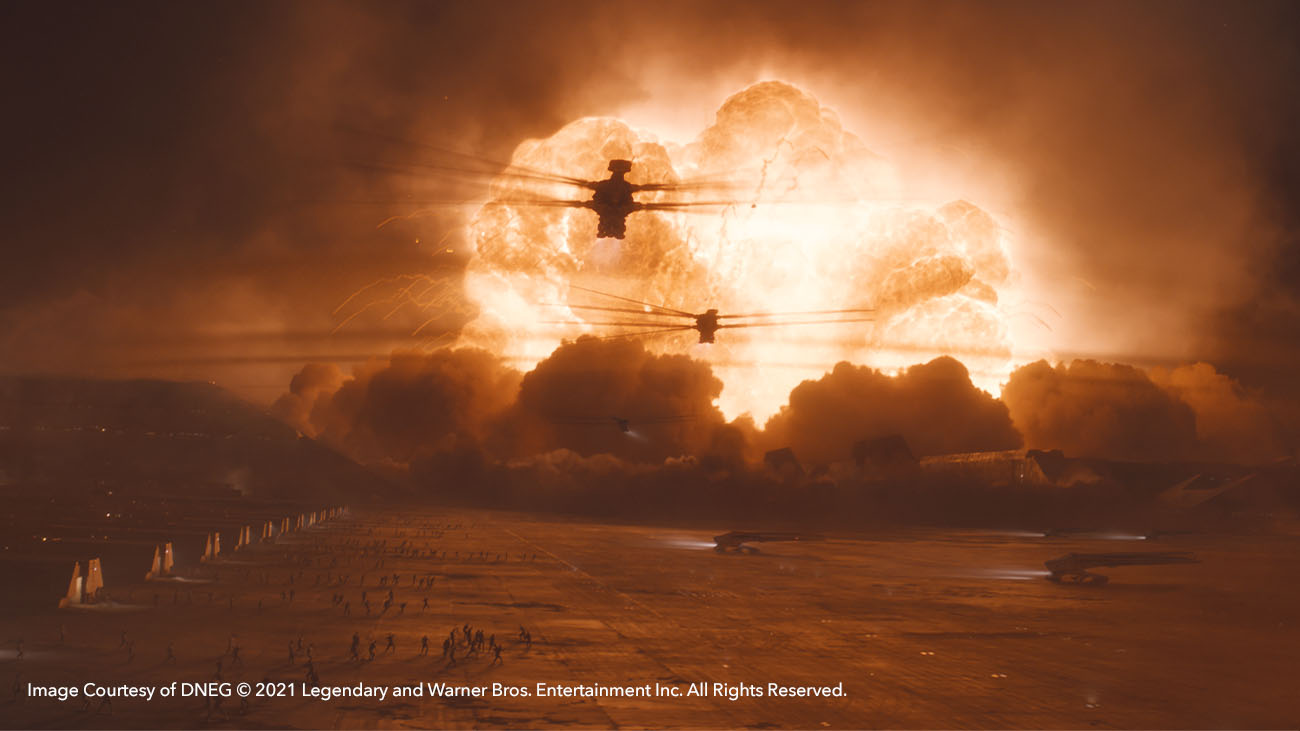
Stephen explains: “[With] the Harkonnen attack sequence and the sequences of Arrakeen under siege there was a lot to coordinate between the animation, crowd, FX, and environment teams across hundreds of shots, and it all had to be done at a massive scale. These sequences also take place in the dead of night so the lighting and compositing team had to not only match into the onset moonlight/explosion lighting but also make sure that the way that light scattered across huge distances between the atmospheric and smoke felt realistic.”
“We developed a system to automate loading in elements into Nuke templates so that when an artist loads a template it will auto-populate scans, roto/prep, grades, reference, cameras, CG from all departments, and so on. This handles a lot of the technical build of a shot so that artists are able to get into the creative aspects of a shot more quickly,” Stephen explains.

Visual effects worthy of an Oscar
Overall, Stephen, Francesco, and the rest of the DNEG team managed to create photorealistic effects that truly brought the story to life, and it’s hard not to believe that the characters are running around Arrakis. It is no wonder that the VFX team was awarded an Oscar for their work. With audiences eagerly anticipating the release of the second film, it will be exciting to see what heights the visual effects are taken to next.

